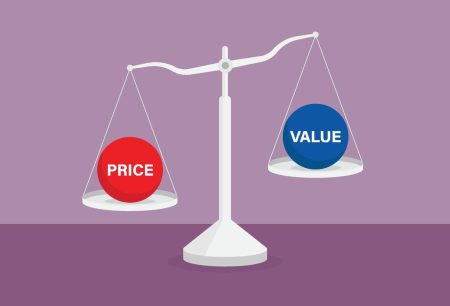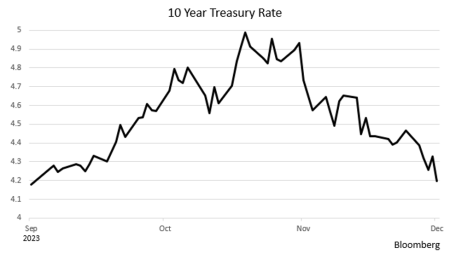The stock market has soared, and the rally has included shares across most sectors—not just Big Tech. That’s, quite simply, a great sign for the equity market.
The
S&P 500
has climbed 10% from a multi-month low hit in late October. Sure, the index’s technology sector has gained a few more percentage points than that, but tons of stocks outside of tech have sprinted higher as well. About 90% of stocks on the index are above their 20-day moving averages, according to research firm CappThesis.
The stock market’s rally has featured strong “breadth,” meaning a high number of stocks are participating in the index’s recent gains. The
Invesco S&P 500 Equal Weight
exchange-traded fund (ticker: RSP) weights each stock in the index equally, thus stripping out the outsize effect of Big Tech. The ETF shows the average S&P 500 stock is up just over 8% since late October.
The main driver of the broad stock rally has been the expectation that interest rates could fall next year, which in turn has led to falling U.S. government bond yields. Data this week showed that inflation decelerated in October, running at a lower pace than economists had expected. That solidifies the narrative that the Federal Reserve is likely to refrain from further interest-rate increases aimed at cooling economic demand. The Fed could even cut rates within the next year. Treasury yields dropped sharply this week.
Hopes for lower interest rates—and the resulting drop in Treasury yields—are positive for all sorts of stocks.
Within the tech sector, lower bond yields provide a major bump for tech valuations because they make future profits more valuable. Many tech companies are fast-growing and expecting a bulk of their profits to come many years in the future.
For more mature, economically-sensitive companies that are producing large profits today—think manufacturers, commodity producers and some consumer companies to name a few sectors—lower interest rates help the economy continue to grow, lifting sales and profit expectations.
Shares of utilities and cellular service providers have also benefited. Their sales and profits aren’t sensitive to changes in broader economic demand, but investors own them for their consistent dividend payments. Lower Treasury yields make dividend yields more attractive, encouraging investors buy the stocks.
This broad range of strong stock price performance is a positive signal. First off, Big Tech, with its stellar outlook for profit growth, could carry the market as long as the outlook for interest rates doesn’t rise too much. Secondly, in the event that Big Tech does falter for some sector-specific reason, the rest of the market can pick up the slack as long as investors remain confident in the outlook for the Fed’s plan and the economy.
The best news of all is that history points to more gains for the market. Not only has a strong majority of S&P 500 stocks advanced in the past several trading days, but this has happened alongside an increase in daily trading volumes—a sign of strong conviction in stocks. When that happens, the index goes on to gain for the following 65 days the majority of the time, with a median return of 6.5%, according to Macro Risk Advisors.
Just respect the market—it’s making it loud and clear that it’s trying to keep moving higher.
Write to Jacob Sonenshine at [email protected]
Read the full article here















